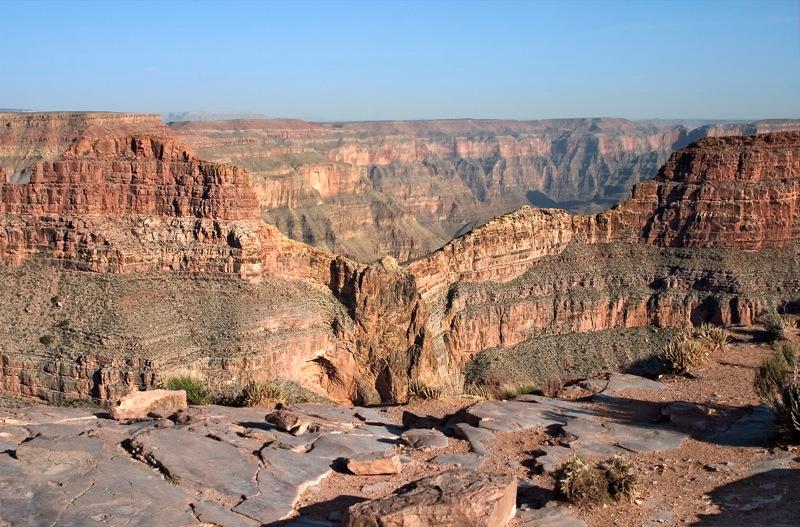Obama administration bans new uranium mines near Grand Canyon
Eagle Rock as seen from the Eagle Point on the west rim of the Grand Canyon in Arizona. (Photo by Julius Reque via Wikimedia Commons, cc-by-sa.)
The U.S. Interior Secretary recently decided that, at least for the next 20 years, there’d be no uranium mining in and around the Grand Canyon.
“When you look at a place like the Grand Canyon we carry out a great example through this protective measure because we’re saying, yes, this place is very special and we need to make sure that we can and will protect it,” the secretary, Ken Salazaar, said.
Jane Danowitz, Director of Public Lands for the Pew Environment Group, said most Americans would be shocked to learn that uranium mining is allowed at the door step of the Arizona landmark.
“I think that’s one of the reasons why the President took the action that he did and decided to issue a moratorium on all new claims staking around the Grand Canyon for the next 20 years,” Danowitz said.
Salazaar announced the decision Jan. 9.
Experts disagree how much uranium is near the Grand Canyon. But they don’t disagree that a law signed by then-President Ulysses S. Grant in 1872 gives any company, foreign or domestic, the right to go almost anywhere on public lands, like national parks, to mine hard-rock metals, like gold and uranium.
“To add insult to injury, the metals that they can take, including gold and uranium, they can take for free without taxpayer compensation,” Danowitz said. “This is in contrast to what oil and gas and coal companies have done for decades and that is, pay the federal treasury royalties.”
Danowitz said American taxpayers get nothing for this mining. They’re left holding the bag when it comes to clean up, despite getting nothing for the metals. Estimates are that $2.5 billion in metals are taken off public lands for free. Lawmakers are trying to find consensus on how to reform the policy.
But not everyone is thrilled with the Interior decision to ban mining around the Grand Canyon. Sen. John McCain pointed out that uranium mining has created thousands of jobs and could be a source of domestic energy.
But Danowitz counters that tourism is the dominant industry around the Grand Canyon, attracting 5 million visitors each year, generating more than $700 million annually for the region and providing more than 12,000 full-time jobs.
Plus, she said, the companies that are operating there now, are mostly foreign and are already exporting the uranium they harvest.
“There’s a Canadian interest, there’s a Russian state-owned entity that has a significant number of claims, also the South Koreans,” Danowitz said.
Danowitz said when all is said and done, this will be viewed as one of the most important decisions made by the Obama Administration.
“It’s a decision that’s not only good for the environment, it’s good for the whole economic vitality of the southwest,” she said. “It’s good for jobs, it’s good for tourism, and it’s good for protecting one of the most famous icons in the world.”
Our coverage reaches millions each week, but only a small fraction of listeners contribute to sustain our program. We still need 224 more people to donate $100 or $10/monthly to unlock our $67,000 match. Will you help us get there today?
